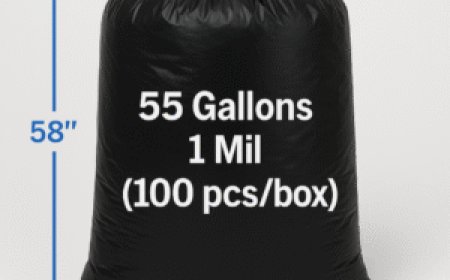How to Use Data Analytics to Grow Your Business in 2025
Ive spent the last few years running a small online business, and one of the biggest lessons Ive learned is how essential data analytics has become. In 2025, understanding and using data is no longer just something big companies do its something I rely on every day to make better decisions, reach the right customers, and improve the way I run things. Even if youre just getting started, learning how to track and interpret your data can make a real difference in growth and performance.
Identifying What Data Matters Most
When I first got into analytics, Ill admit I felt overwhelmed by the amount of data available. Website visits, social engagement, sales reports its easy to get lost in the numbers. But over time, I figured out that the most important thing is focusing on the metrics that actually connect to my goals.
Some of the key data points I track regularly include:
-
Customer acquisition costs how much Im spending to gain a new customer
-
Conversion rate the percentage of visitors who take an action I want (like buying or signing up)
-
Customer lifetime value how much the average customer is worth over time
-
Email open and click-through rates how well my messages are working
-
Abandoned cart rate helps me see where customers drop off
By reviewing these numbers weekly, Ive been able to adjust my strategy without guessing. For example, when I saw that one products page had a lot of views but not many conversions, I tested a new description and images. Within a week, sales picked up. That kind of targeted change came directly from watching the right data.
Using Tools to Make Tracking Easier
I dont do all this manually. There are plenty of tools out there now that make it easier to track and understand your business data. I started with a few free tools and slowly added paid ones as my needs grew. The biggest thing is to choose ones that are simple and match your setup.
Here are the tools Ive found most helpful:
-
Google Analytics tracks website traffic and behavior
-
Shopify Reports gives product-level and customer-level data
-
Meta Business Suite useful for ad performance and social tracking
-
Mailchimp or Klaviyo helps measure email campaign effectiveness
-
Looker Studio helps me build custom dashboards for deeper insights
I check these tools at the beginning of each week and compare trends month-over-month. Its become part of my routine like making coffee or checking messages. I also keep track of my own habits, especially when I need a break or want to reset my focus during long-lasting vape work sessions. One day while reviewing ad performance, I reached for my vape pen and realized how simple actions, like checking key metrics or stepping back to reflect, can be the most productive.
Making Data-Driven Decisions
Once I had good data and the right tools, the next step was learning to take action based on what the data showed. This meant not just collecting numbers but using them to decide what to test, what to keep, and what to stop.
Here are a few ways Ive made changes using data:
-
Adjusted ad spending based on ROI by platform
-
Sent personalized emails based on browsing behavior
-
Focused product inventory around high-margin items
-
Changed website layout based on user heatmaps
Each change started small, and I always tracked the impact over time. I didnt expect instant success, but with steady adjustments, Ive seen stronger performance across the board. It also helps reduce wasted effort. Im not just doing things to stay busy Im doing things that move the needle.
Predicting Trends and Planning Ahead
One thing Ive really started focusing on this year is using data to forecast future patterns. Ive built simple dashboards that show seasonal trends, repeat customer behavior, and product demand. This helps me plan inventory, adjust budgets, and even test new ideas before making big changes.
Heres how I prepare ahead using analytics:
-
Look at previous years data to anticipate busy seasons
-
Track emerging keywords in my niche to test new content
-
Monitor which marketing channels grow fastest month-over-month
-
Set goals based on current trends instead of random targets
Planning with data has helped me stay more stable, even when sales fluctuate. It also gives me more confidence when trying new things, since Im not just guessing. Whether Im adding a new product or launching a limited campaign, I know whats likely to work because Ive seen the numbers.
Sometimes while going over forecasts, I think about how far things have come from spreadsheets to real-time dashboards, it feels like business is more connected than ever. It reminds me of how I chose an e-cigarette as a way to stay focused while avoiding distractions. Both decisions were based on ease, routine, and a sense of control the same ideas that guide how I use data now.
Final Thoughts
Data analytics in 2025 isnt just for large teams or tech experts. Ive learned that any business even a solo one like mine can benefit from tracking the right numbers, using the right tools, and making decisions based on facts instead of guesses. Its made my workflow smoother, my marketing sharper, and my results more predictable.
If youre just starting out, dont try to track everything at once. Begin with one or two metrics that relate directly to your goals. Watch what happens when you make small adjustments, and use tools that help you understand the story your data is telling. Over time, those small improvements will build into real growth and youll have the confidence that comes from knowing your business is being driven by more than just hope.



































